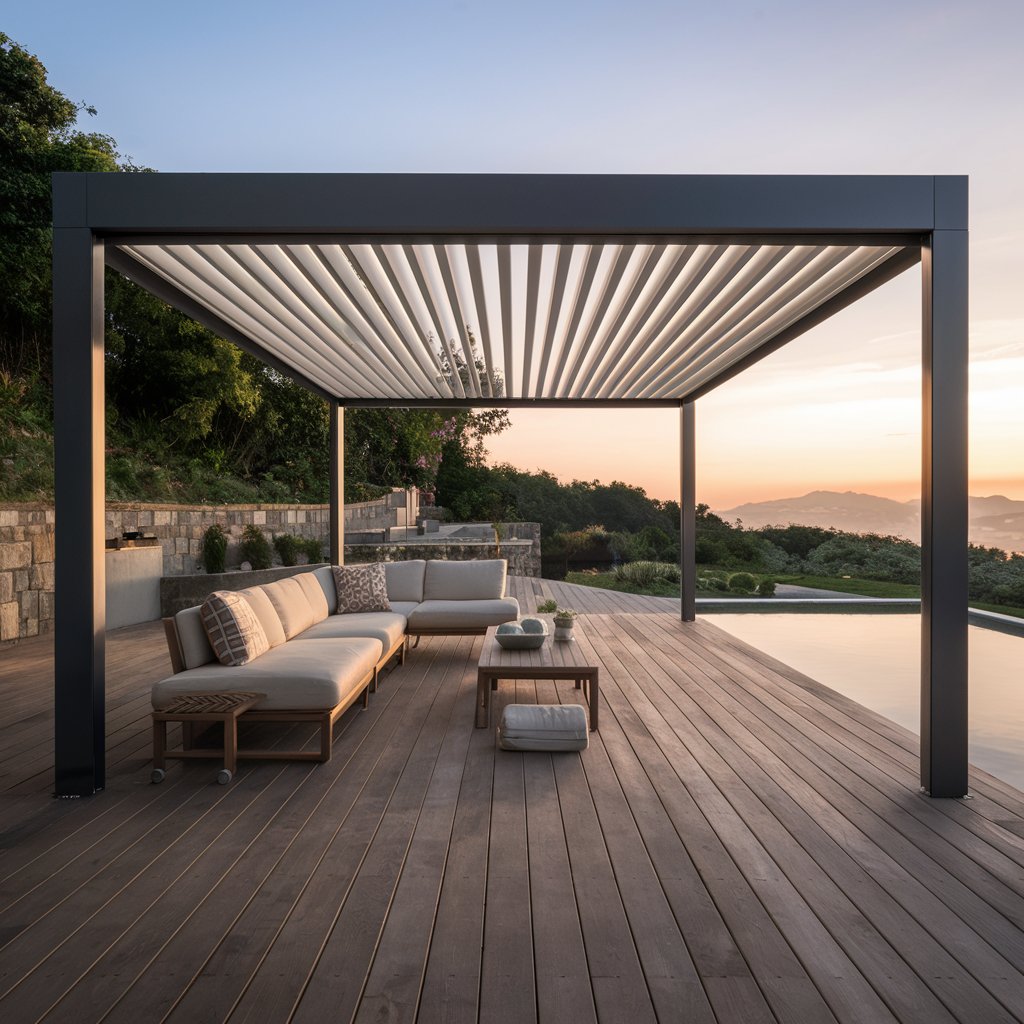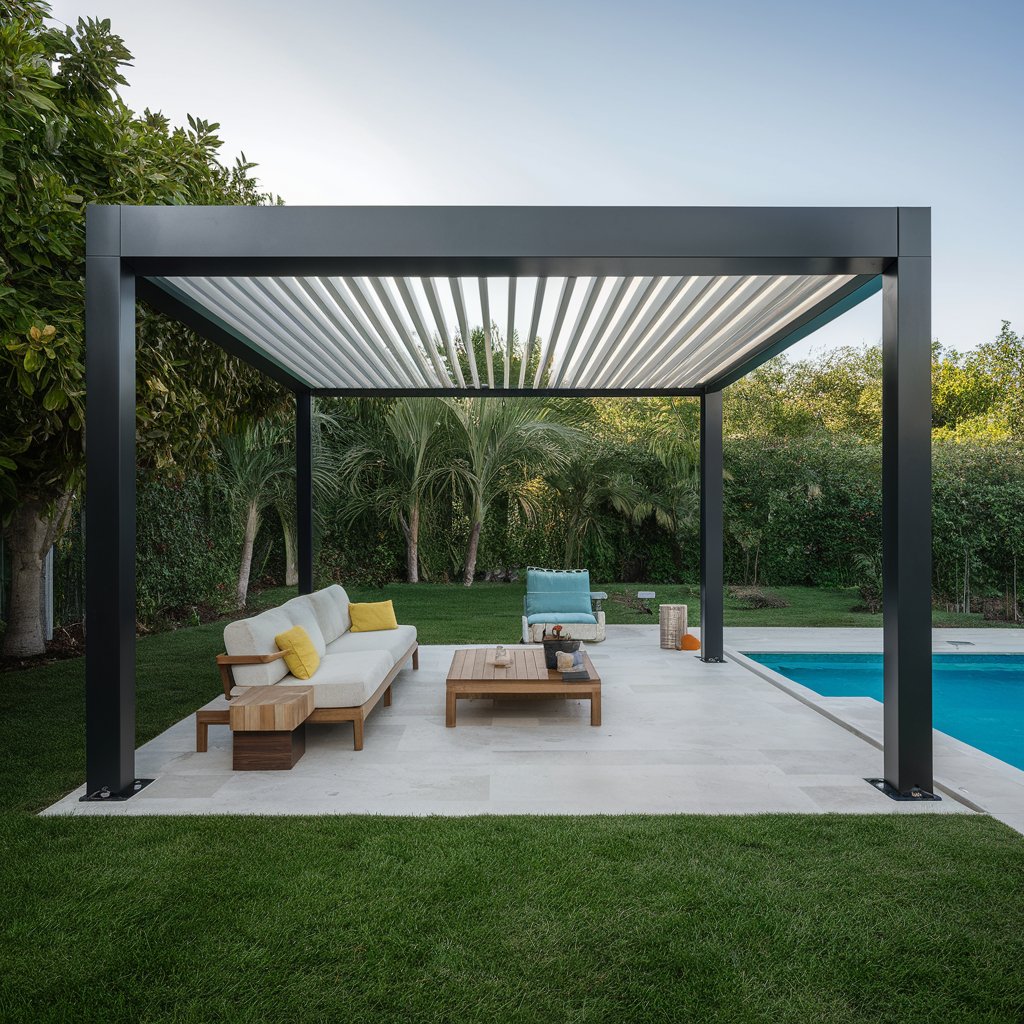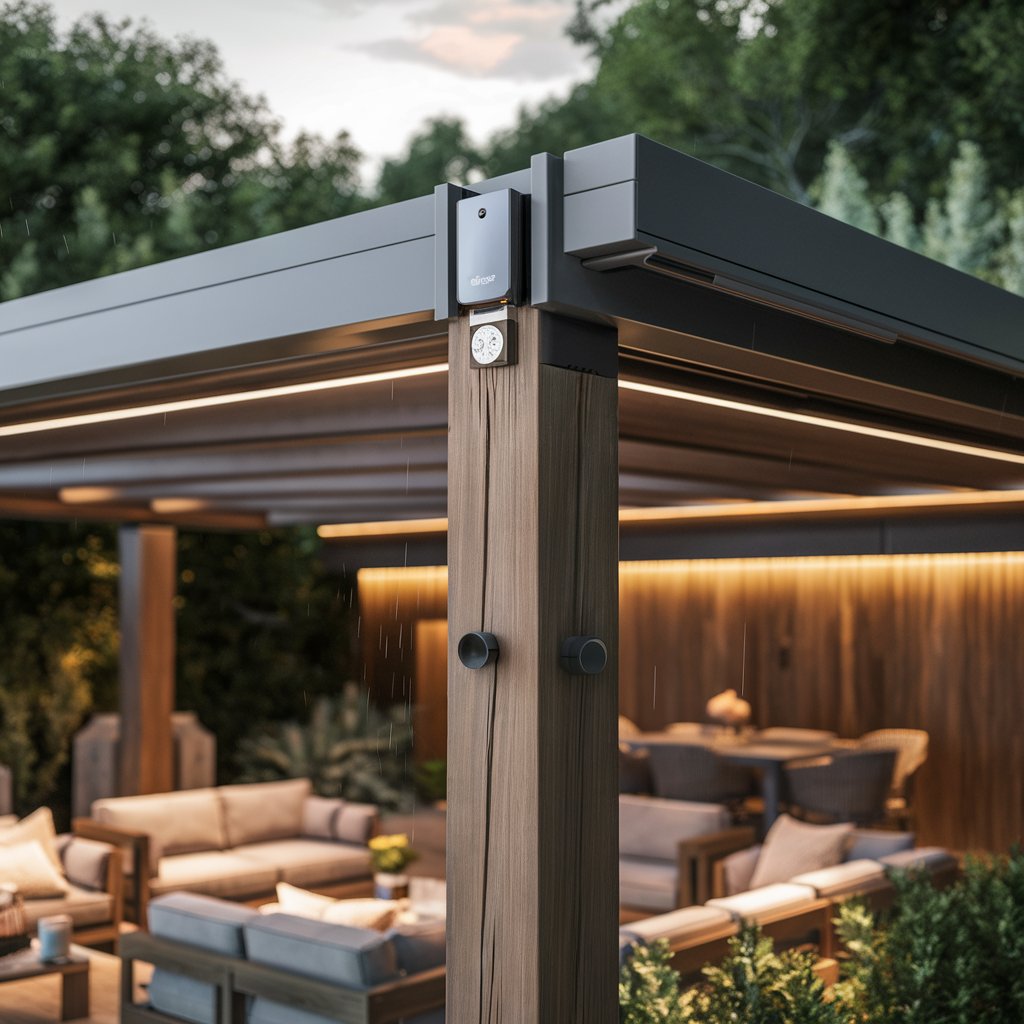Introduction
A European-style pergola is more than just an architectural feature; it’s a testament to centuries of garden design tradition and cultural appreciation for outdoor living spaces. Rooted in the grand landscapes of Europe, these pergolas offer a blend of aesthetic appeal, functional shading, and a touch of timeless elegance that can transform any outdoor area into a sanctuary of beauty and relaxation. This article delves into the rich history, diverse styles, and contemporary applications of European pergolas, highlighting their enduring allure and practical benefits.

Historical Roots of the Pergola
The pergola’s history can be traced back to ancient civilizations, but its prominence in Europe began during the Renaissance. The term “pergola” itself is derived from the Latin word “pergula,” which means a projecting eave. In ancient Rome, pergolas were commonly used in gardens to create shaded walkways and provide support for climbing plants like grapevines.
During the Renaissance, the use of pergolas flourished, particularly in Italy. Italian Renaissance gardens were renowned for their symmetry, order, and use of classical architecture. Pergolas became integral components of these gardens, serving both practical and aesthetic purposes. They were often constructed with robust materials such as stone and wood, adorned with intricate carvings and decorations that reflected the artistry of the period.
As the Renaissance ideals spread across Europe, so did the popularity of pergolas. In France, the influence of Italian garden design was evident in the grand châteaux and their expansive gardens, where pergolas became central features. The English, too, embraced the pergola, incorporating it into their own landscape designs during the Tudor and Elizabethan periods.
Styles of European Pergolas
European pergolas come in a variety of styles, each reflecting the unique architectural and cultural influences of different regions. Here, we explore some of the most notable styles:
- Italian Pergolas: Italian pergolas are perhaps the most iconic, characterized by their classical proportions and use of robust materials like stone and wood. These structures often feature columns inspired by Roman and Greek architecture, with decorative elements such as friezes and capitals. Italian pergolas are typically adorned with climbing plants like wisteria and grapevines, creating a lush and romantic ambiance.
- French Pergolas: French pergolas, particularly those from the Baroque and Rococo periods, are known for their ornate and elaborate designs. These pergolas often feature intricate wrought ironwork, with delicate scrolls and floral motifs. In the gardens of French châteaux, pergolas were used to create intimate outdoor rooms and shaded pathways, providing a serene escape from the formal garden layout.
- English Pergolas: English pergolas reflect the country’s love for natural landscapes and informal garden design. Often constructed from wood, these pergolas blend seamlessly with the surrounding flora. The Arts and Crafts movement of the late 19th and early 20th centuries had a significant influence on English pergolas, emphasizing craftsmanship and the use of natural materials. English pergolas are frequently adorned with climbing roses, clematis, and honeysuckle.
- Spanish Pergolas: Spanish pergolas, influenced by Moorish architecture, often feature intricate tile work and arched openings. These pergolas are designed to provide respite from the intense Mediterranean sun, offering shaded areas for relaxation. The use of terracotta tiles and brightly colored ceramics adds a vibrant touch to Spanish pergolas, making them focal points in gardens and courtyards.
Designing a European-Style Pergola
Designing a European-style pergola involves more than just choosing a style; it requires careful consideration of materials, proportions, and placement to ensure the structure complements the surrounding landscape. Here are some key factors to consider:
- Materials: The choice of materials is crucial in achieving an authentic European look. Stone, wood, and wrought iron are traditional materials that can be used individually or in combination. For an Italian or French pergola, consider using limestone or marble columns with wooden beams. English pergolas typically use timber, while Spanish designs may incorporate terracotta and ceramic tiles.
- Proportions: The proportions of the pergola should be in harmony with the scale of the garden or outdoor space. Tall columns and wide beams can create a sense of grandeur, while more modest dimensions may be suitable for smaller gardens. The height of the pergola should also consider the growth of climbing plants, allowing them ample space to thrive.
- Placement: The location of the pergola is another important aspect of the design. Pergolas can be freestanding structures or attached to the side of a building. Consider placing the pergola in a position where it can provide shade and create a focal point in the garden. A pergola can also frame a view, create a transition between different areas of the garden, or provide a sheltered dining or seating area.
- Climbing Plants: One of the defining features of a European pergola is the use of climbing plants. Choose plants that are suited to your climate and that will complement the style of the pergola. Wisteria, roses, and grapevines are classic choices for Italian and French pergolas, while clematis and honeysuckle are popular in English gardens. Bougainvillea and jasmine can add a Mediterranean touch to a Spanish pergola.
Practical Benefits of a Pergola
Beyond their aesthetic appeal, pergolas offer several practical benefits that enhance the usability and enjoyment of outdoor spaces:
- Shade and Comfort: Pergolas provide much-needed shade, making outdoor areas more comfortable during hot weather. The dappled light filtering through the beams and climbing plants creates a pleasant, cool environment for relaxation and socializing.
- Extended Living Space: A pergola effectively extends the living space of a home, creating an outdoor room that can be used for dining, entertaining, or simply unwinding. With the addition of outdoor furniture, lighting, and accessories, a pergola can become a cozy and inviting retreat.
- Support for Climbing Plants: Pergolas offer a sturdy structure for supporting climbing plants, allowing them to grow vertically and cover the pergola with lush foliage and blooms. This not only enhances the beauty of the pergola but also promotes healthier plant growth by providing better air circulation and exposure to sunlight.
- Increased Property Value: Well-designed outdoor spaces, including pergolas, can significantly increase the value of a property. A pergola adds architectural interest and functionality to a garden, making the property more attractive to potential buyers.
- Flexibility in Design: Pergolas are highly versatile and can be customized to suit individual preferences and needs. They can be designed to match the architectural style of the home, and additional features such as retractable canopies, curtains, or integrated lighting can be added to enhance their functionality.
Contemporary Applications
In contemporary garden design, European-style pergolas continue to be popular for their timeless appeal and versatility. They can be seamlessly integrated into a variety of settings, from urban rooftop gardens to sprawling country estates. Here are some modern applications of pergolas:
- Rooftop Gardens: In urban areas where outdoor space is limited, pergolas can create a serene oasis on rooftops. These structures provide shade and privacy, making rooftop gardens more inviting and functional. With the addition of planters and seating, a rooftop pergola can become a green retreat in the heart of the city.
- Outdoor Kitchens and Dining Areas: Pergolas are perfect for creating outdoor kitchens and dining areas. By providing shade and a sense of enclosure, they make outdoor dining more comfortable and enjoyable. Incorporating features such as built-in grills, countertops, and dining tables can transform a pergola into a fully functional outdoor kitchen.
- Poolside Retreats: A pergola can enhance the appeal of a pool area by providing a shaded lounge space. With comfortable seating, outdoor rugs, and curtains, a poolside pergola can become a luxurious retreat for relaxation and entertainment.
- Garden Walkways and Arbors: Pergolas can be used to create charming garden walkways and arbors, leading visitors through different areas of the garden. These structures add vertical interest and can be adorned with flowering vines, creating a picturesque and inviting pathway.
- Spa and Wellness Areas: Pergolas can be incorporated into spa and wellness areas, providing a shaded space for yoga, meditation, or hot tubs. The open structure allows for a connection with nature while offering protection from the elements.
Maintenance and Care
To ensure the longevity and beauty of a pergola, regular maintenance is essential. Here are some tips for maintaining a European-style pergola:
- Wood Care: If your pergola is made of wood, it’s important to protect it from moisture and pests. Apply a weather-resistant sealant or paint to prevent wood rot and insect damage. Regularly inspect the structure for any signs of wear or damage, and repair or replace any affected parts promptly.
- Metal Maintenance: For pergolas with metal components, such as wrought iron, regular cleaning and rust prevention are key. Use a wire brush to remove any rust spots, and apply a rust-inhibiting primer and paint to protect the metal. Lubricate any moving parts, such as hinges or sliding mechanisms, to ensure smooth operation.
- Climbing Plant Care: Climbing plants can add beauty and shade to a pergola, but they also require regular care. Prune the plants to prevent overgrowth and ensure they don’t damage the structure. Provide adequate support for heavy vines, and monitor for any signs of disease or pests.
- Cleaning: Keep the pergola clean by regularly sweeping away leaves and debris. Wash the structure with a mild soap solution and water to remove dirt and grime. For stone or tiled pergolas, use a gentle pressure washer to clean the surfaces.
Conclusion
A European-style pergola is a beautiful and functional addition to any outdoor space. With its rich historical roots, diverse styles, and practical benefits, a pergola can enhance the aesthetic appeal and usability of a garden. Whether you choose an Italian, French, English, or Spanish design, a pergola offers a timeless charm that can transform your outdoor area into a sanctuary of beauty and relaxation. By carefully considering the design, materials, and placement, and by providing regular maintenance, you can enjoy the elegance and comfort of a European-style pergola for years to come.


